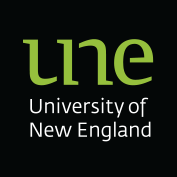| Title: | The effect of lower limb occlusion on recovery following sprint exercise in academy rugby players |
Contributor(s): | Williams, N (author); Russell, M (author); Cook, C J (author) ; Kilduff, L P (author) ; Kilduff, L P (author) |
Publication Date: | 2018-10-01 |
Early Online Version: | 2018-03-03 |
DOI: | 10.1016/j.jsams.2018.02.012 |
Handle Link: | https://hdl.handle.net/1959.11/31840 |
Abstract: | | Objectives: The effects of vascular occlusion on recovery of physiological and neuromuscular markers over 24h, and hormonal reactivity to subsequent exercise were investigated.
Design: Counterbalanced, randomised, crossover.
Methods: Academy rugby players (n = 24) completed six 50-m sprints (5-min inter-set recovery) before occlusion cuff application (thighs) and intermittent inflation to 171-266mmHg (Recovery) or 15mmHg (Con) for 12-min (two sets, 3-min repetitions, 3-min non-occluded reperfusion). Countermovement jumps, blood (lactate, creatine kinase), saliva (testosterone, cortisol), and perceptual (soreness, recovery) responses were measured before (baseline) and after (post, +2h, +24h) sprinting. Saliva was sampled after a 30-min resistance exercise session performed 24h after sprinting.
Results: Although sprinting (total: 40.0 ± 2.8 s, p = 0.238; average: 6.7 ± 0.5 s, p = 0.674) influenced creatine kinase (p < 0.001, +457.1±327.3 μ L-1, at 24h), lactate (p < 0.001, 6.8 ± 2.3 mmol L-1, post), testosterone (p < 0.001, -55.9 ± 63.2 pg mL-1, at 2h) and cortisol (p < 0.001, -0.3 ± 0.3 μg dL-1, at 2h) concentrations, countermovement jump power output (p < 0.001, -409.6 ± 310.1 W; -5.4 ± 3.4 cm, post), perceived recovery (p < 0.001, -3.0 ± 2.3, post), and muscle soreness (p < 0.001; 1.5 ± 1.1, at 24h), vascular occlusion had no effect (all p > 0.05) on recovery. In response to subsequent exercise performed 24h after vascular occlusion, testosterone increased pre-to-post-exercise (Recovery: p = 0.031, 21.6 ± 44.9 pg mL-1; Con: p = 0.178, 10.6 ± 36.6 pg mL-1) however Δtestosterone was not significantly different (p = 0.109) between conditions.
Conclusions: Vascular occlusion had no effect on physiological or neuromuscular markers 2h or 24h after sprinting or in response to a physical stress test.
Publication Type: | Journal Article |
Source of Publication: | Journal of Science and Medicine in Sport, 21(10), p. 1095-1099 |
Publisher: | Elsevier Australia |
Place of Publication: | Australia |
ISSN: | 1878-1861
1440-2440 |
Fields of Research (FoR) 2020: | 320803 Systems physiology |
Socio-Economic Objective (SEO) 2020: | 280103 Expanding knowledge in the biomedical and clinical sciences |
Peer Reviewed: | Yes |
HERDC Category Description: | C1 Refereed Article in a Scholarly Journal |
| Appears in Collections: | Journal Article
School of Science and Technology
|
|---|
 ; Kilduff, L P (author)
; Kilduff, L P (author)